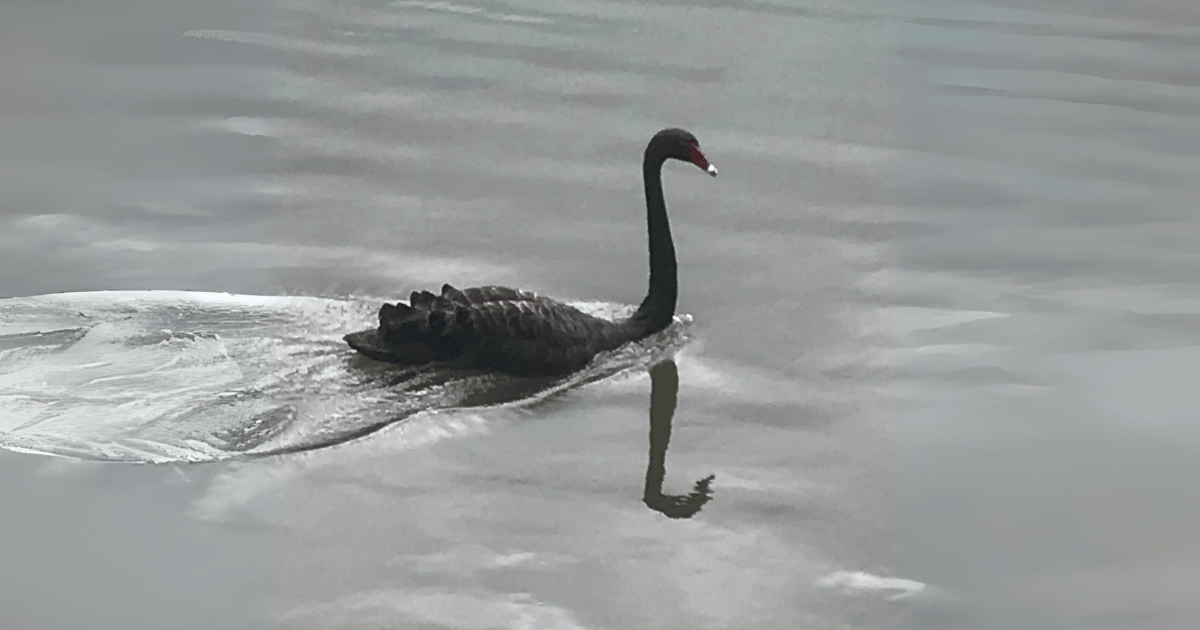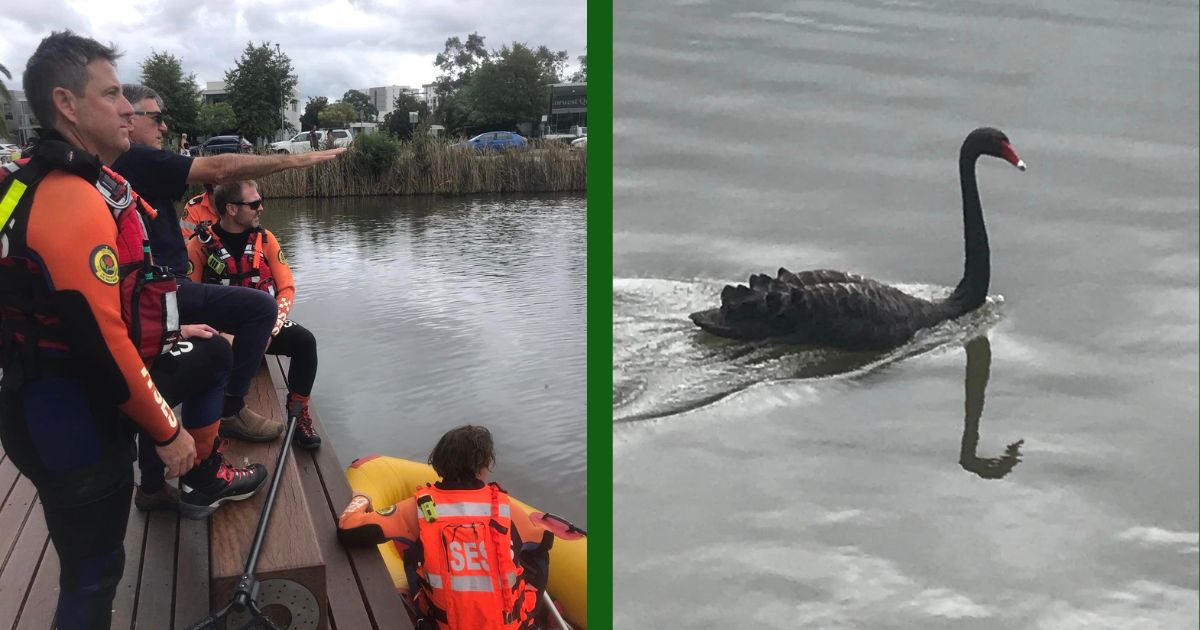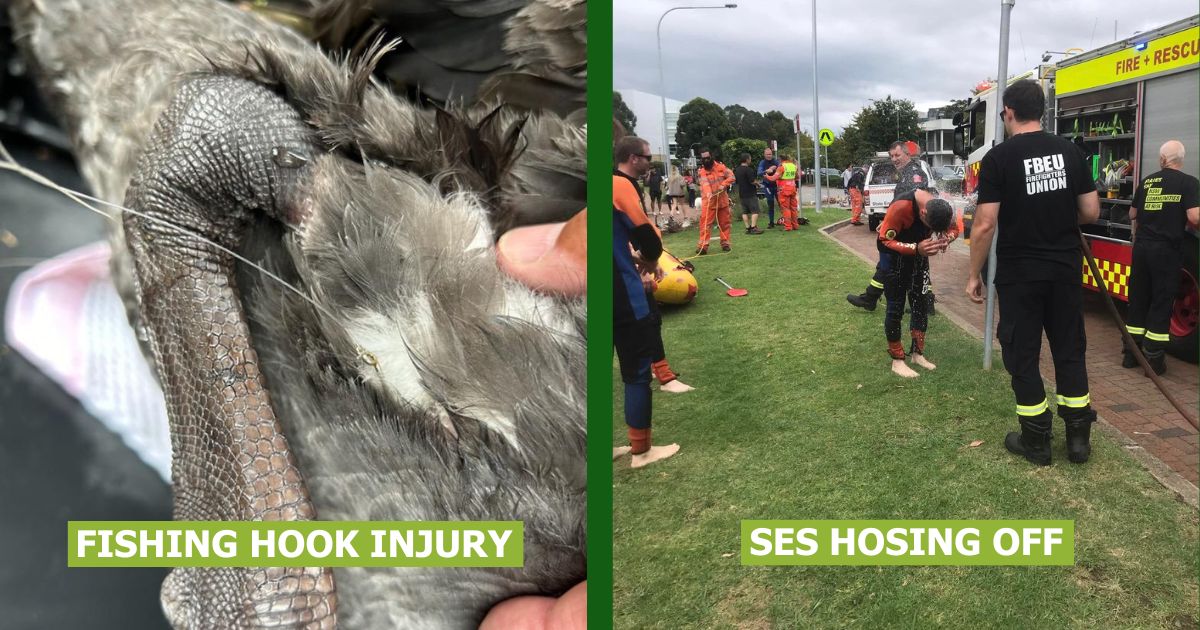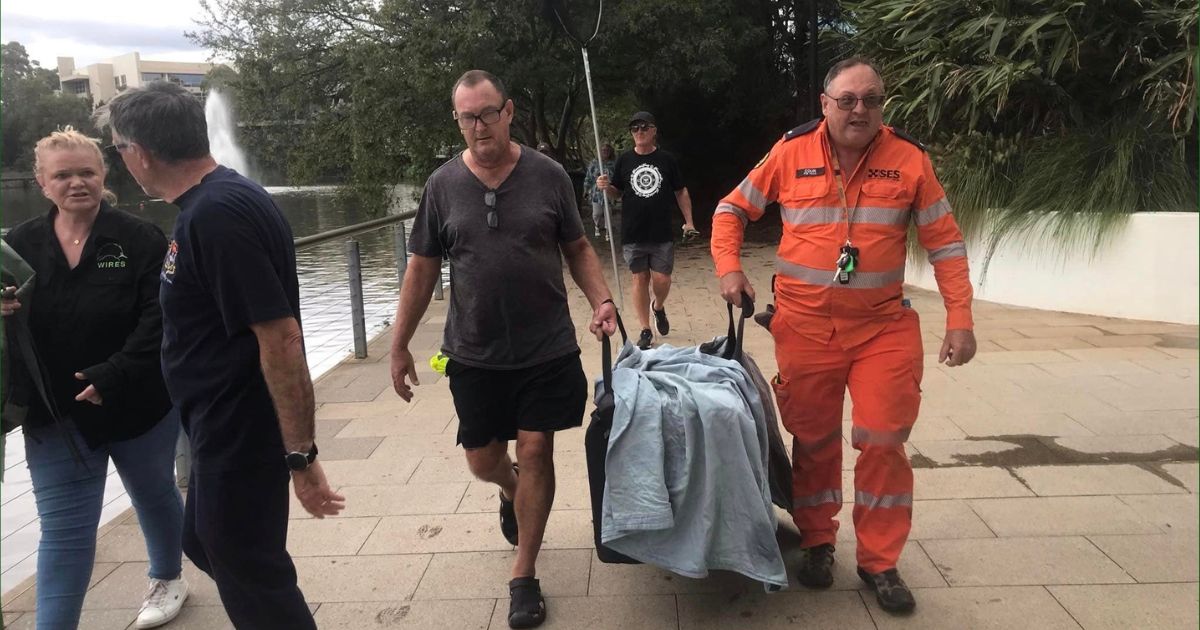
WIRES Teams Up With SES To Save Black Swan
Tuesday, March 26, 2024
WIRES had a bustling March, receiving over 12,000 rescue calls throughout New South Wales, Queensland, and Tasmania. Amidst the various challenging rescues, a notable collaboration with the SES emerged, demonstrating the commitment and teamwork essential for safeguarding Australia's native wildlife.

Monitoring the Local Area
WIRES Volunteer Beth had been monitoring a black swan residing in Sydney’s northwest for several weeks.
She had noticed a superficial fishing hook caught in its feathers. Repeated rescue attempts, alongside WIRES rescuer Doug, had failed as the swan proved too quick to catch safely.
However, on 16 March, WIRES received numerous calls from concerned locals who had spotted the black swan acting lethargic.
It appeared to be entangled in fishing wire, causing the swan significant distress.
Beth accepted the rescue and immediately contacted the Hills SES Unit.

Rescue Squad Kicks into Gear
The SES crew reacted swiftly and effectively, bringing several operatives to the lake alongside a boat and volunteers from the Blacktown SES unit.
The rescue needed to be completed as soon as possible, as the lake's poor water quality could potentially lead to a fatal infection if it seeped into any wound.
While the rescue attempt was occurring, the Hills Police Area Command coordinated traffic, and Kellyville Fire and Rescue moved into position, ready to hose down the swan and rescuers.
WIRES and the SES acted decisively, carefully cornering the black swan. The rescue concluded after a brave SES operative leapt from a nearby bridge into the water and restrained the injured swan.
Additionally, a small, injured duck was also rescued from the lake. Both waterbirds were then taken to Baulkham Hills Vet.

Visiting the Vet
Following a thorough examination by the vet, Beth and Doug were relieved to hear that the fishing hook had not created a wound.
So, once the vet removed the hook and the tight fishing wire, the black swan was ready to be released.
Unfortunately, the wood duck that had been retrieved from the lake was suffering from botulism, a paralysis disease caused by bacteria entering its bloodstream.
It was with a heavy heart that the vet agreed to euthanise the duck.
Beth and Doug left the vet and returned to the swan’s lake later that day, where they released the grateful waterbird back into the wild.
The black swan continues to be monitored by local WIRES volunteers.
Fishing Equipment and Botulism, Common Wildlife Threats
Rescue stories like this highlight how native fauna are acutely affected by many human-made threats.
An alarmingly high number of WIRES’ avian rescues involve entanglements and injuries caused by fishing lines and metal hooks.
Many birds sustain serious and even life-threatening injuries from carelessly discarded fishing materials.
Botulism is another condition that impacts a regrettably high number of animals. It presents itself in wildlife inhabiting polluted lakes and rivers.
The best way to prevent threats to native wildlife is to appropriately dispose of waste or fishing material rather than discard it in lakes and rivers.
By working together to keep our waterways free of pollution, we can help protect our local ecosystems and continue to cohabit with native species into the future.
Recent Posts
Celebrating World Earth Day: The History of Environmental Action and Collaboration
Feathers of Change: Native Duck Identification Project
NSW Koala Strategy Under Review Amidst Threat of Extinction
WIRES Teams Up With SES To Save Black Swan
Celebrating National Eucalypt Day
WIRES National Grants Support Heathcote Local to Landscape Project
WIRES and Taronga Team Up To Deliver World-Leading Platypus Facilities
WIRES Research Grant Recipient Aims to Protect Platypus Populations
WIRES Vet Dr. Tania Bishop's Wildlife Journey
Securing Koala Survival: Appin Road Wildlife Crossings Fall Short, Urgent Need for Overpasses
